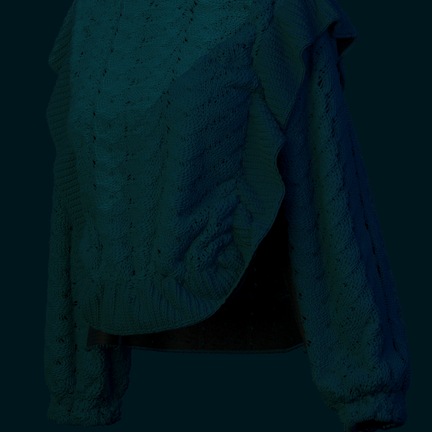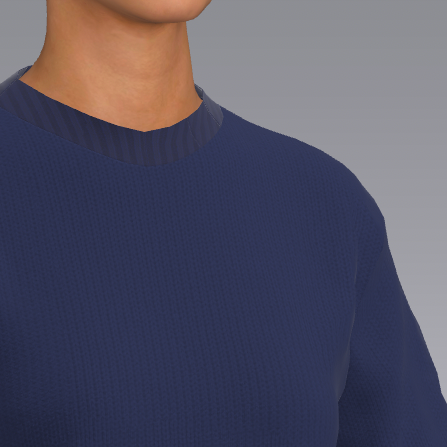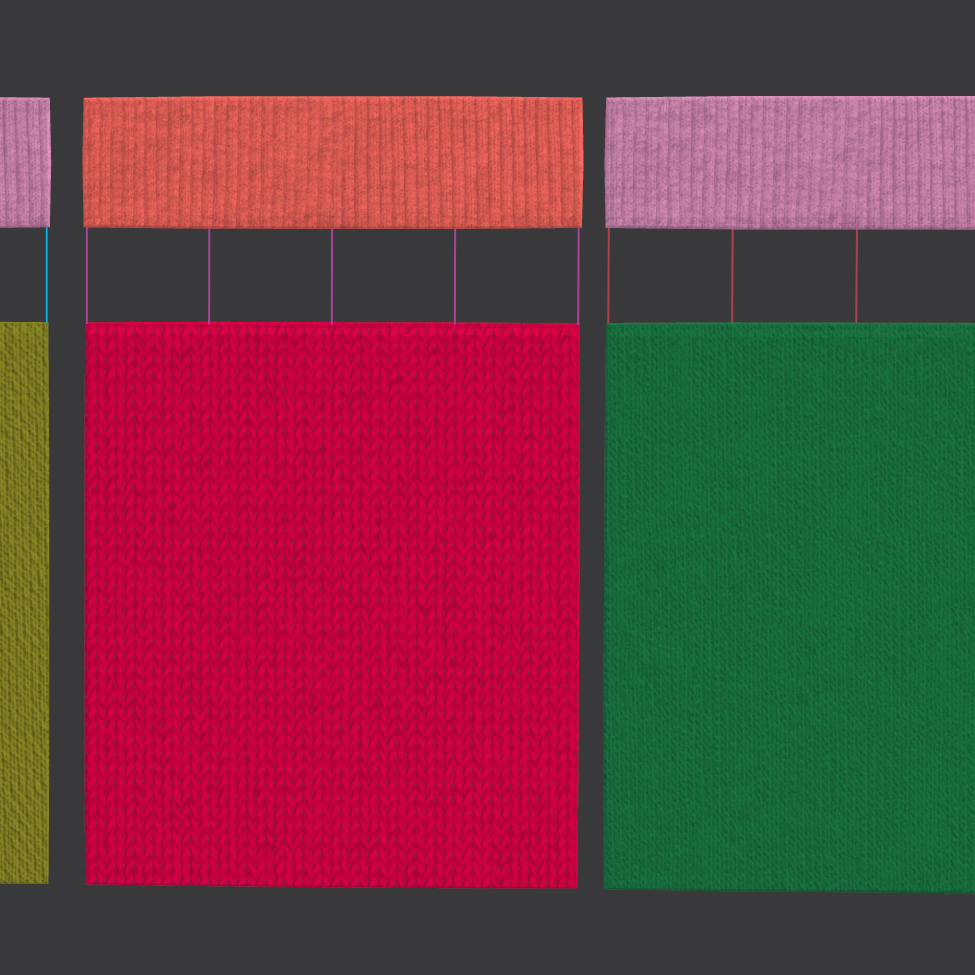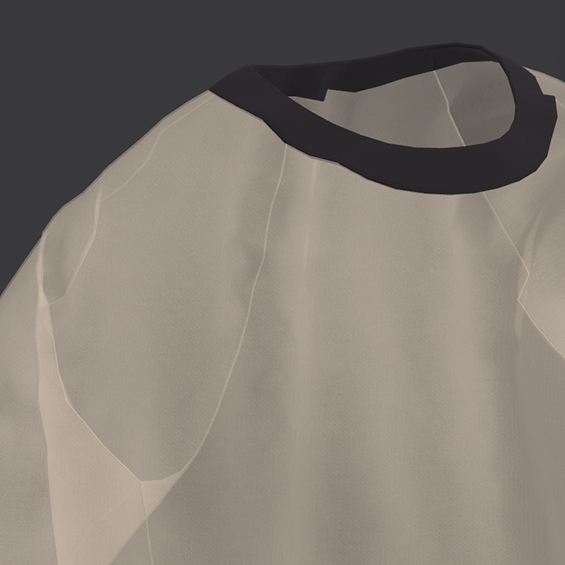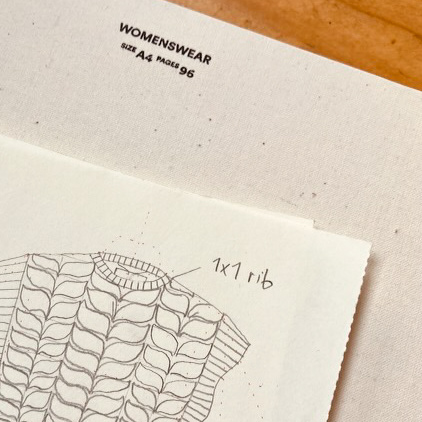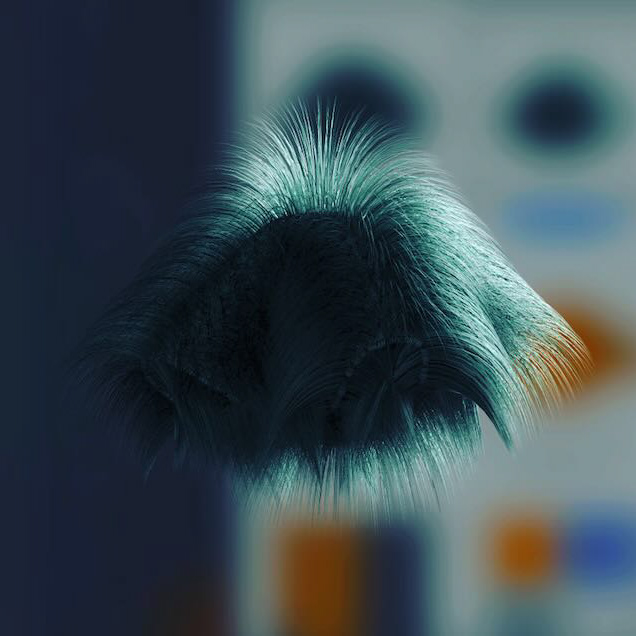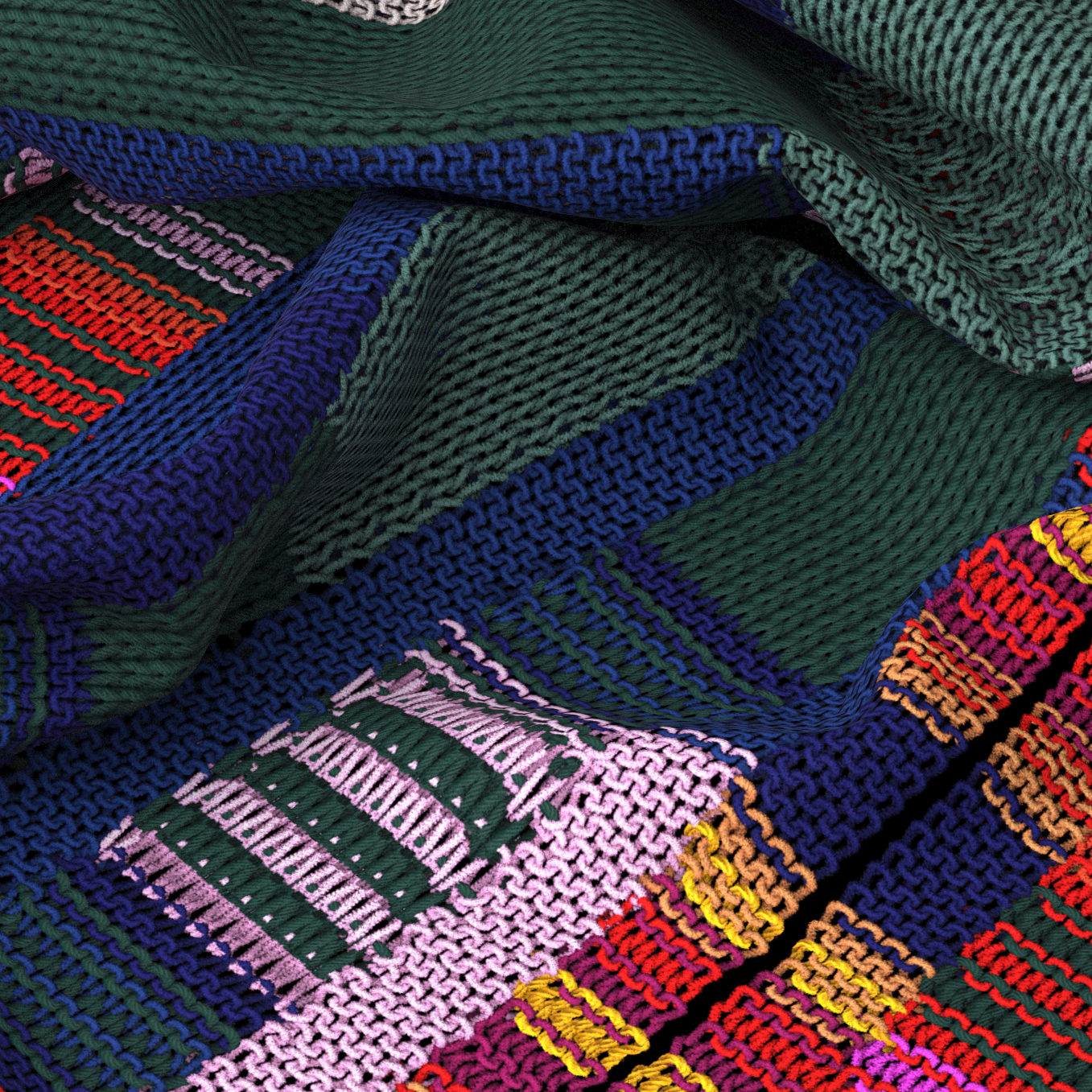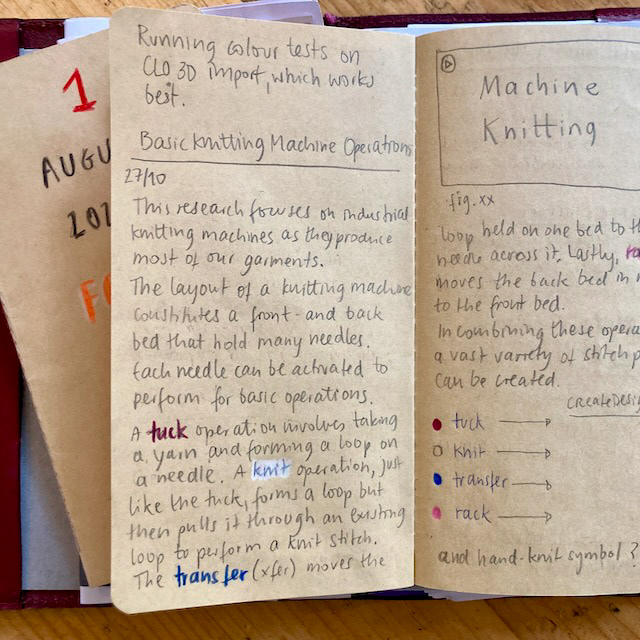Each fabric in a 3D garment software consists of two primary parts, the image layers and the physical properties. The technology that brings all fabric elements together is called physical based rendering (PBR). In my work Digital Fabrics in the unit Innovative Production Technologies I explored and experimented with the parameter settings of texture maps in detail.
The visual representation of a fabric is made up of texture maps. These are image layers, staggered on top of each other with each layer fulfilling a particular purpose to reflect the material. The texture map, also known as colour map, is used to display the overall fabric look and the tactility of the yarn. The normal map is used to represent the structure of the fabric, the displacement map adds to the illusion of depth in the simulation and finally the opacity map can be used to define translucent areas.
Garment simulation software such as CLO3D, Browzwear and Optitex are using 3D mesh and texture maps for simulation. Likewise, this technology is used for the simulation of fabrics in knitting software, such as CreateDesign by Stoll and APEXFiz by Shima Seiki, as will be further explored in the chapter ‘Yarn-Level Knit Simulation'.
